Curated by Carsten Becker and Stephan Klee
Opening Fri 22 Nov 6 – 10 pm
23 Nov – 1 Dec 2019
Fri - Sun 2 - 6 pm
and by appointment
frontviews at Heit
Eichendorffstr. 5
10115 Berlin
with the kind support of Heit Berlin

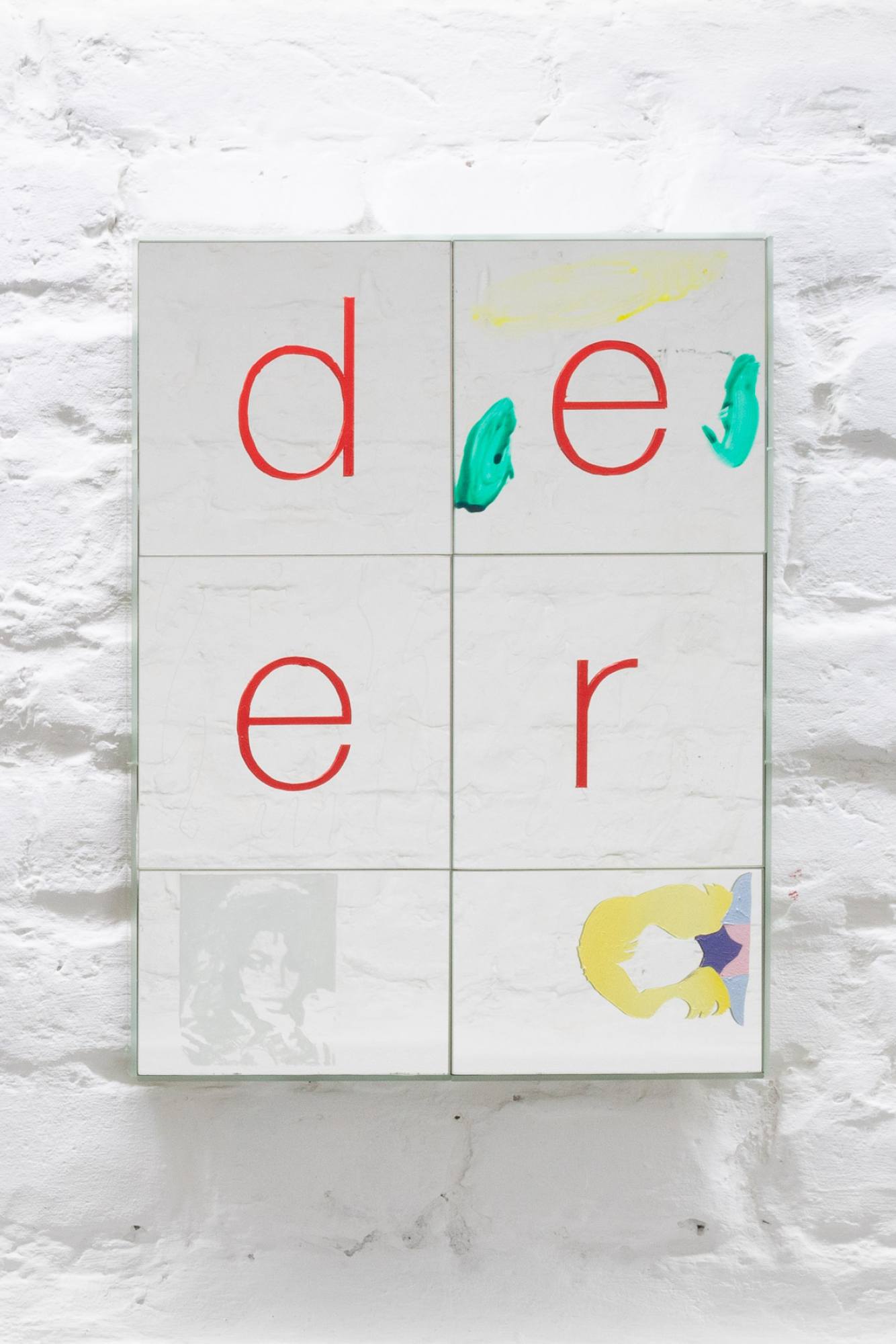

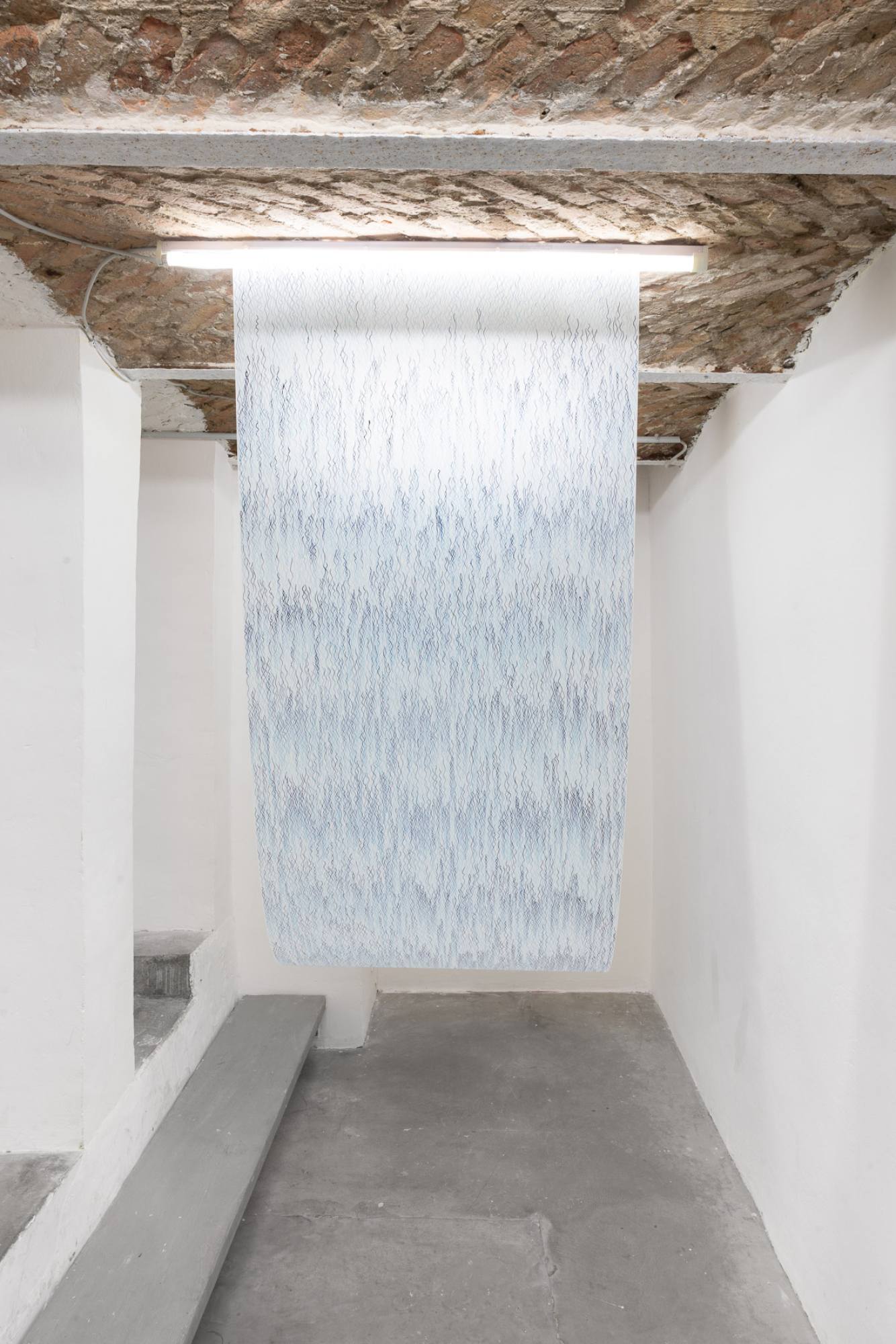
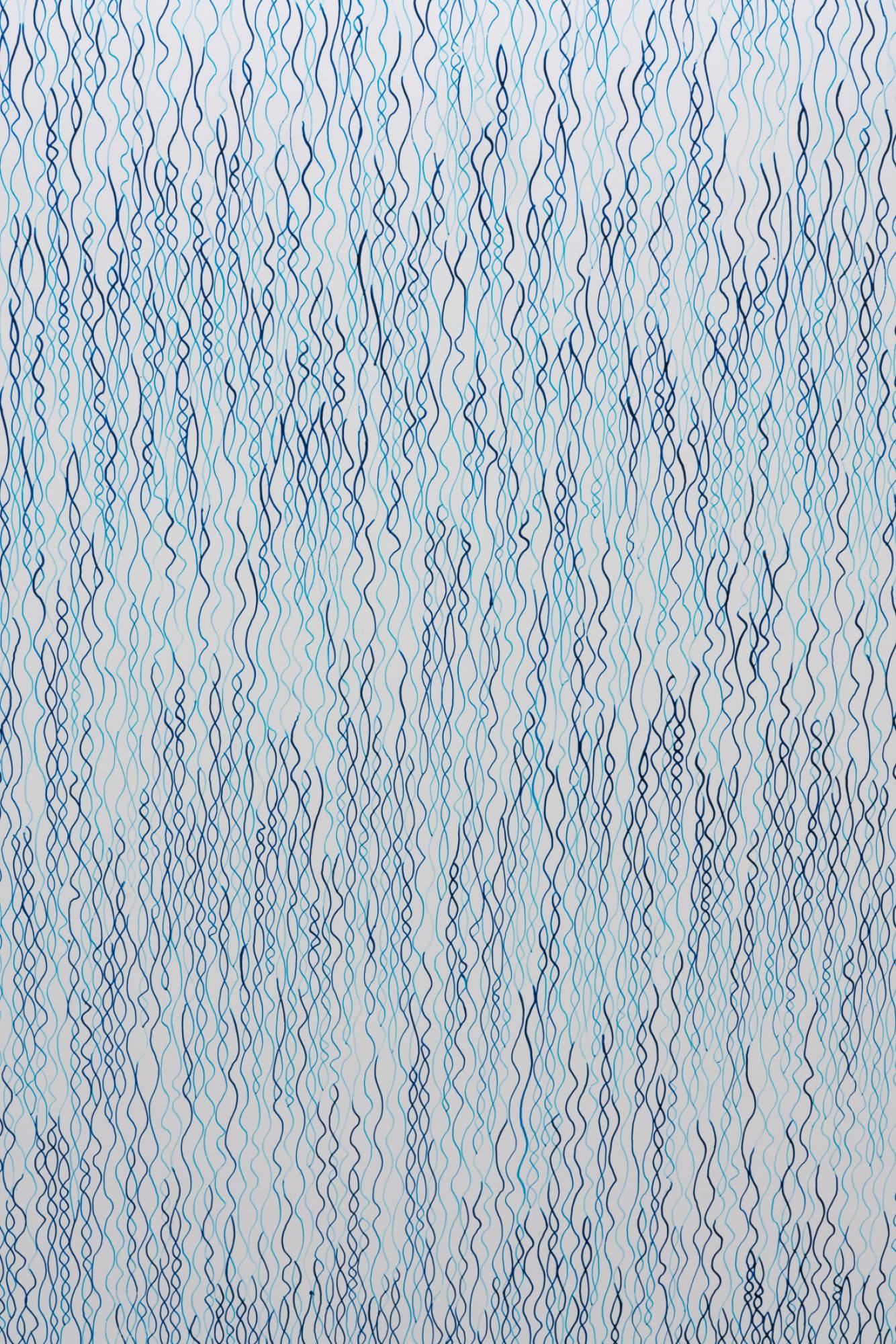
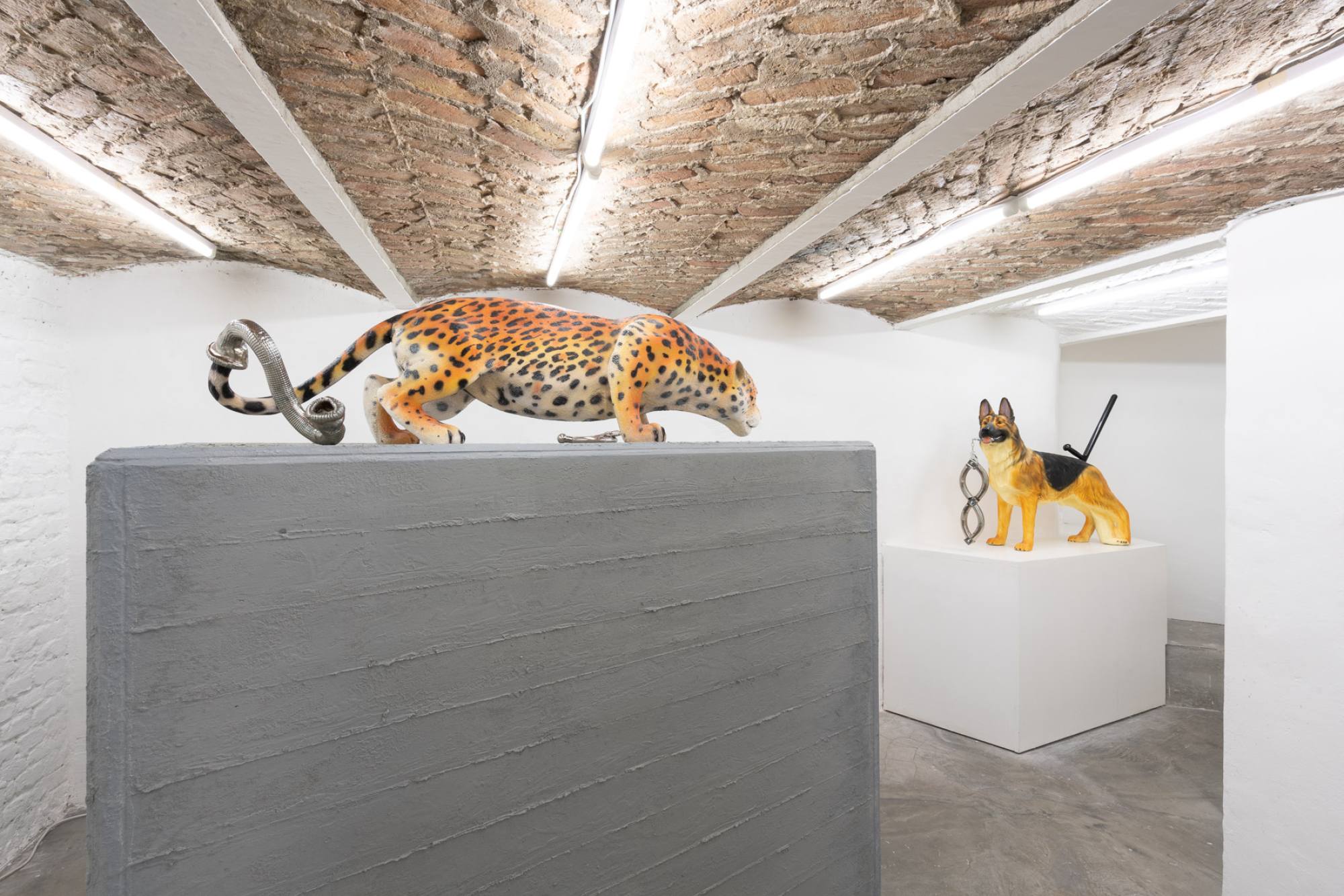
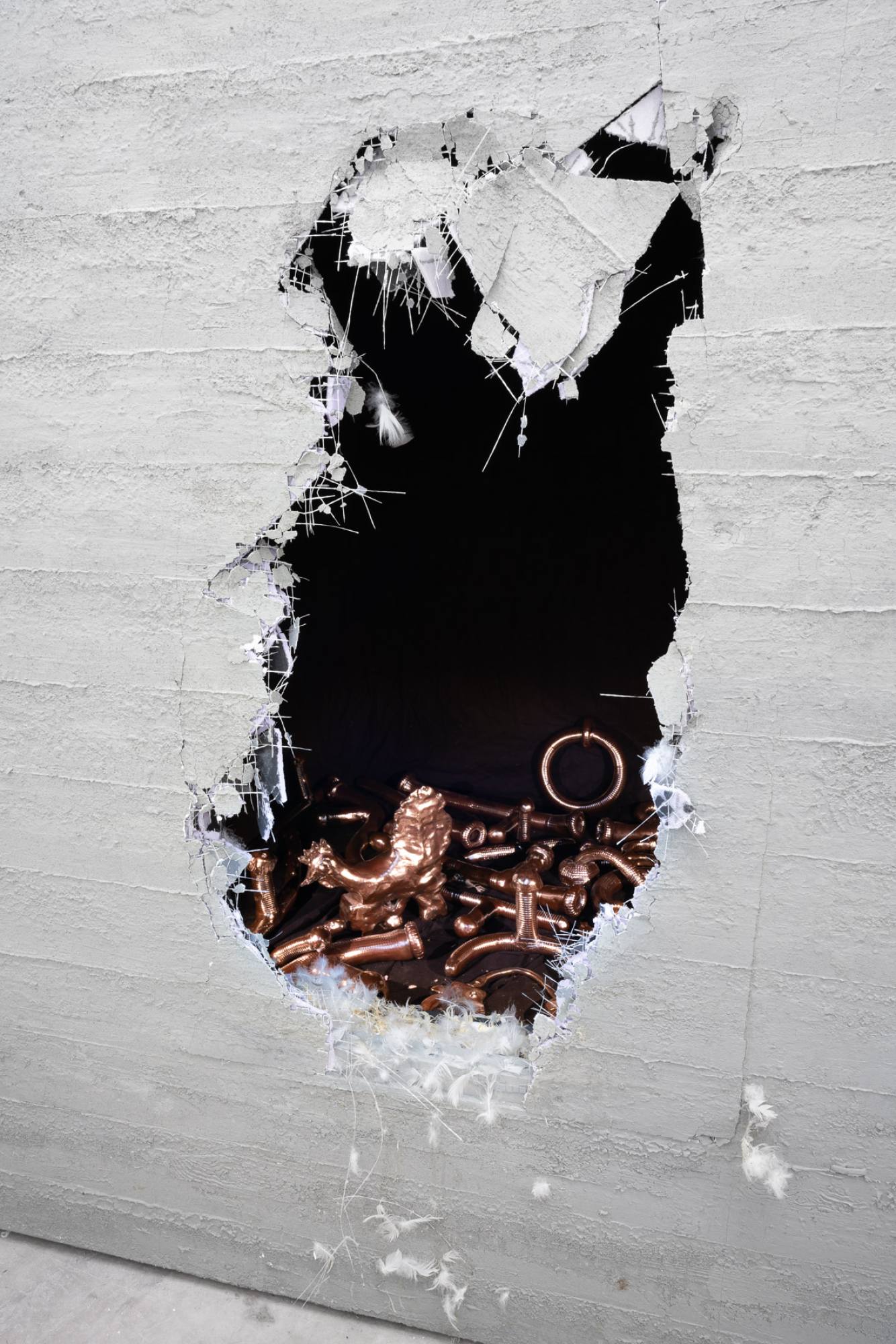
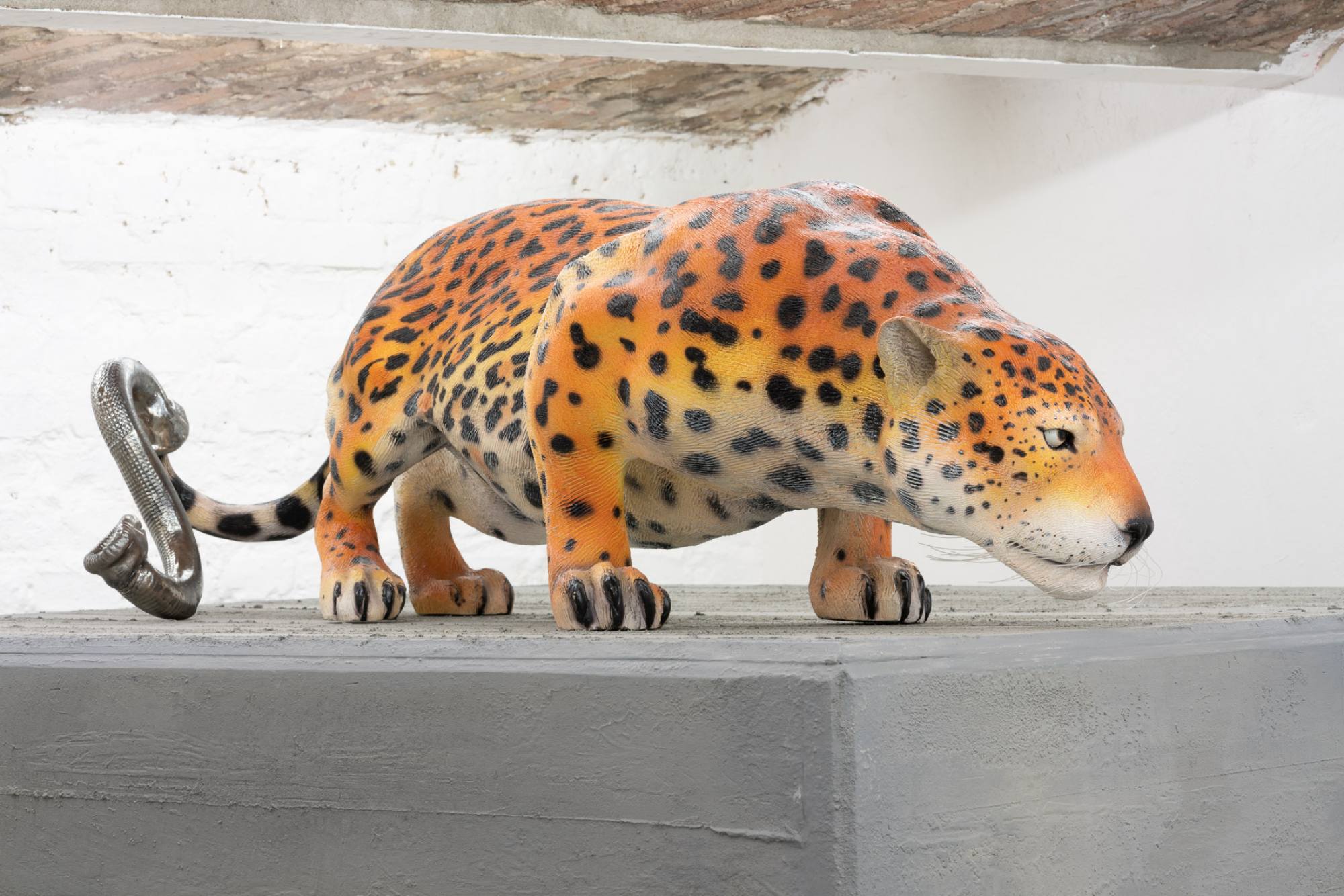


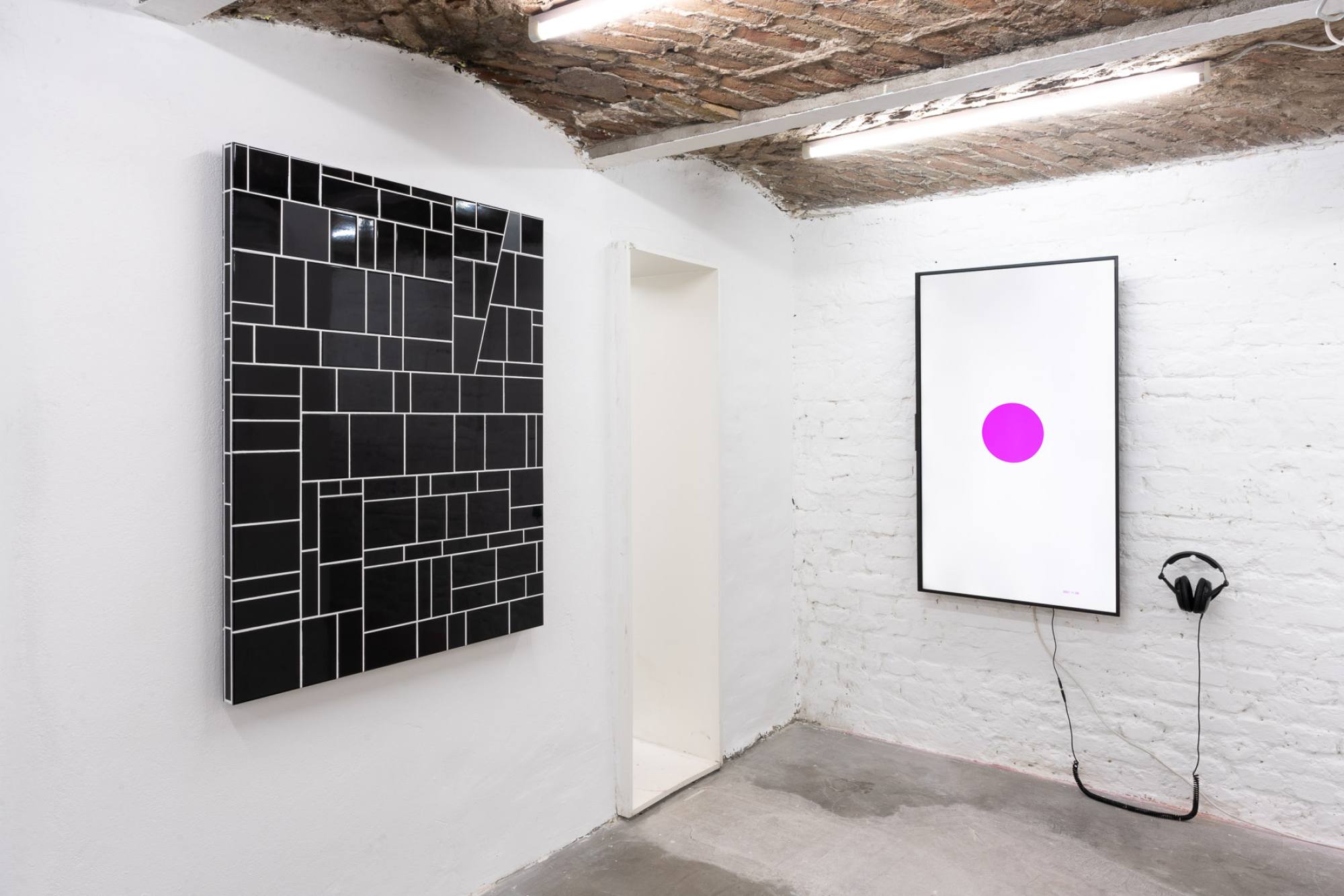
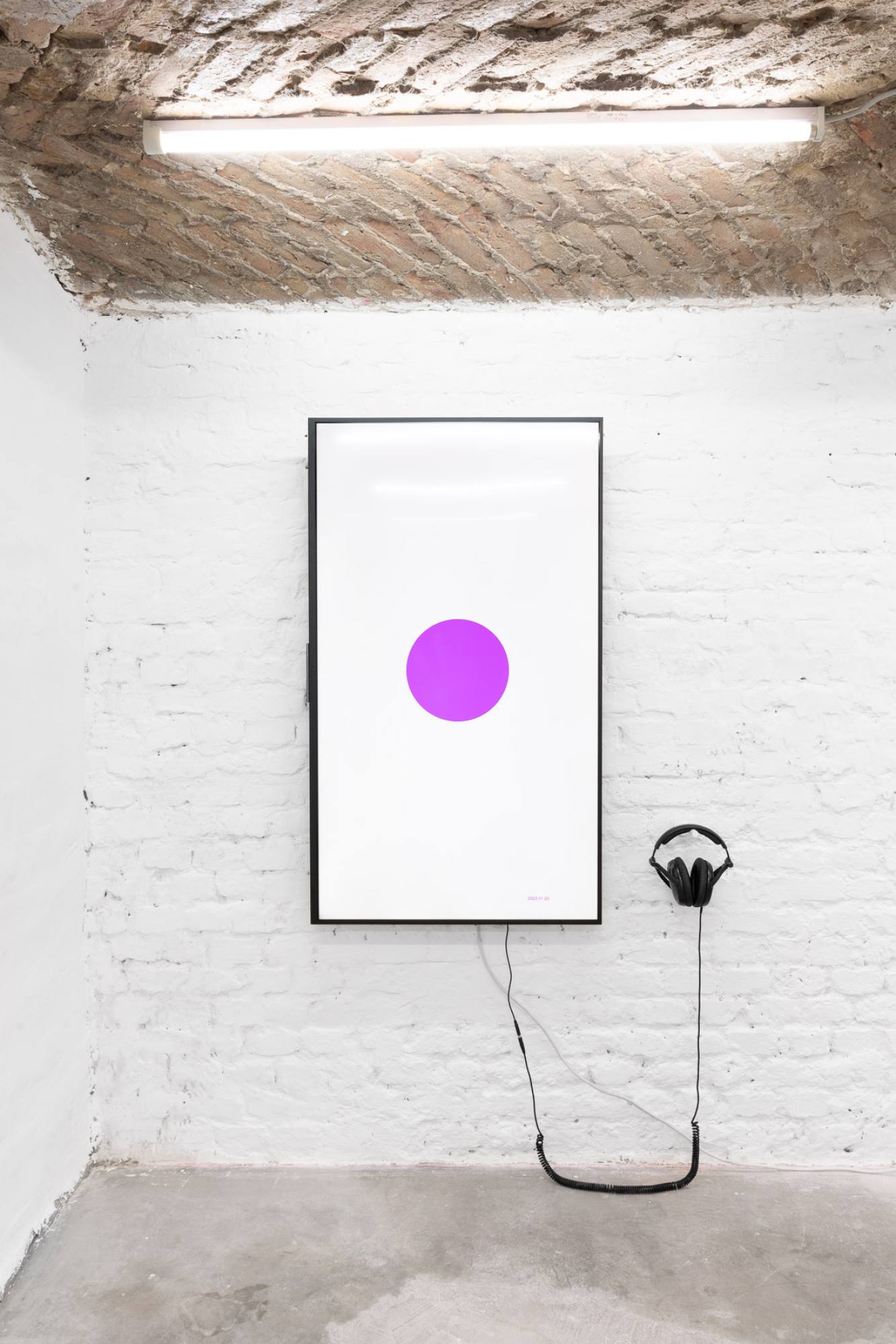
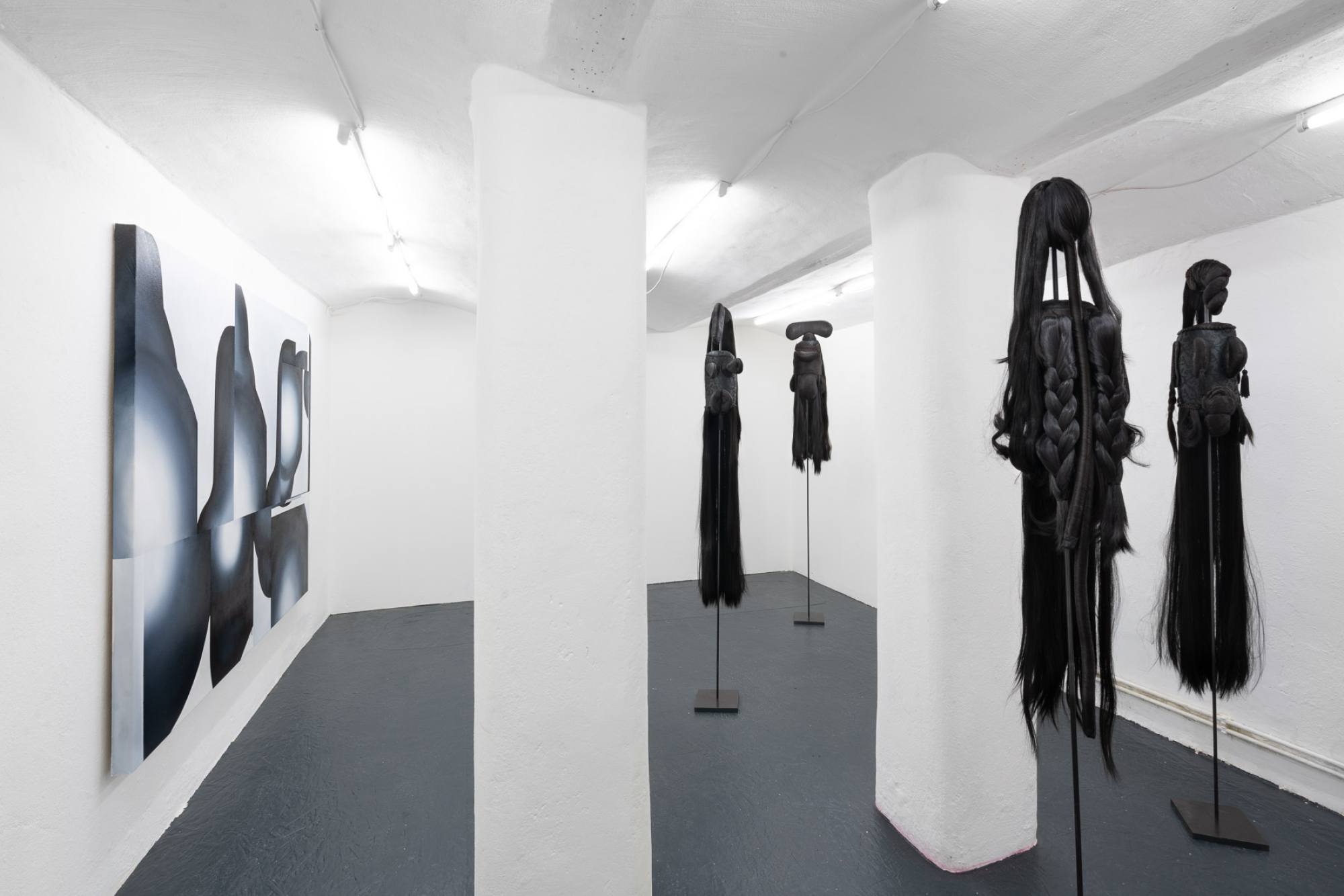
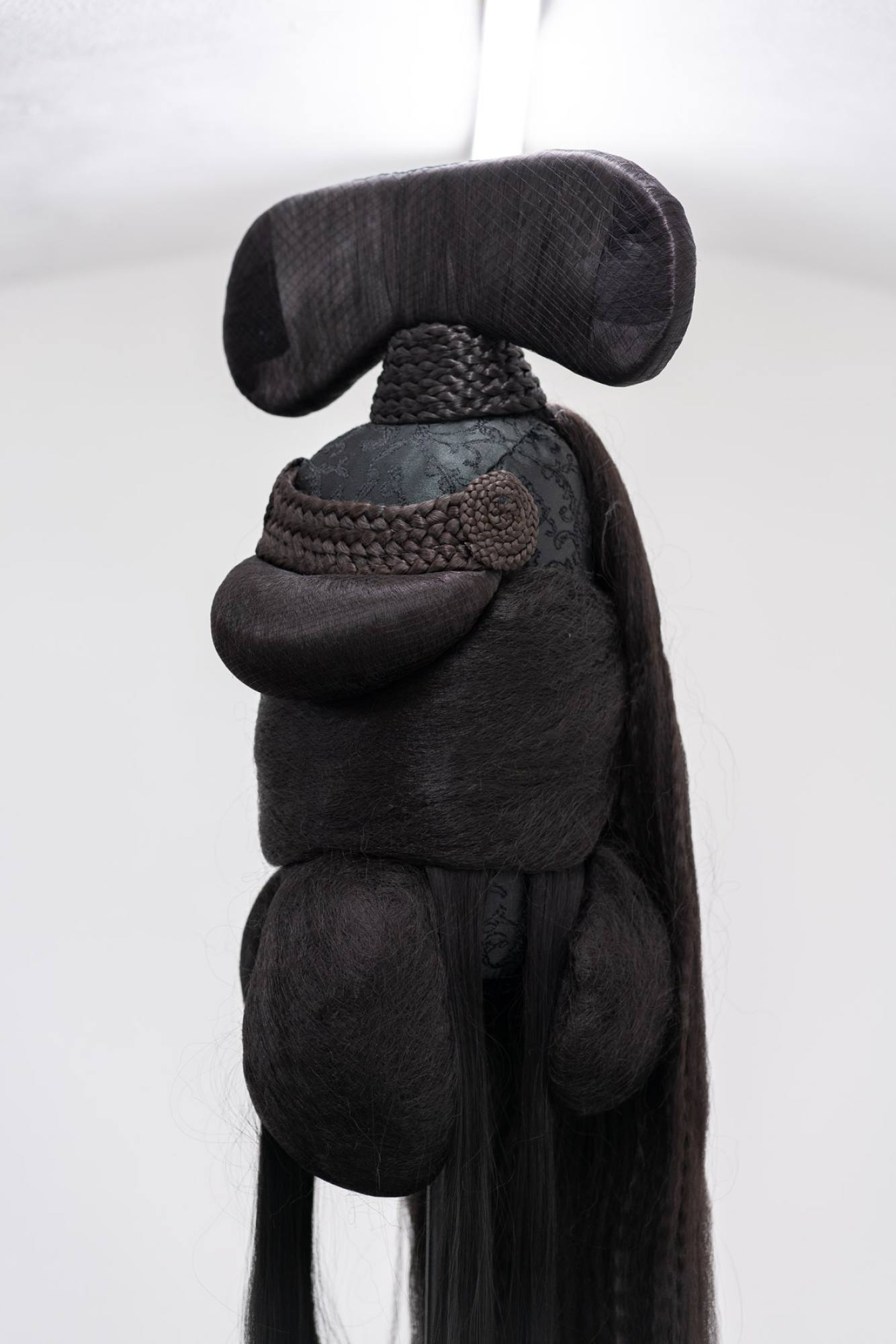
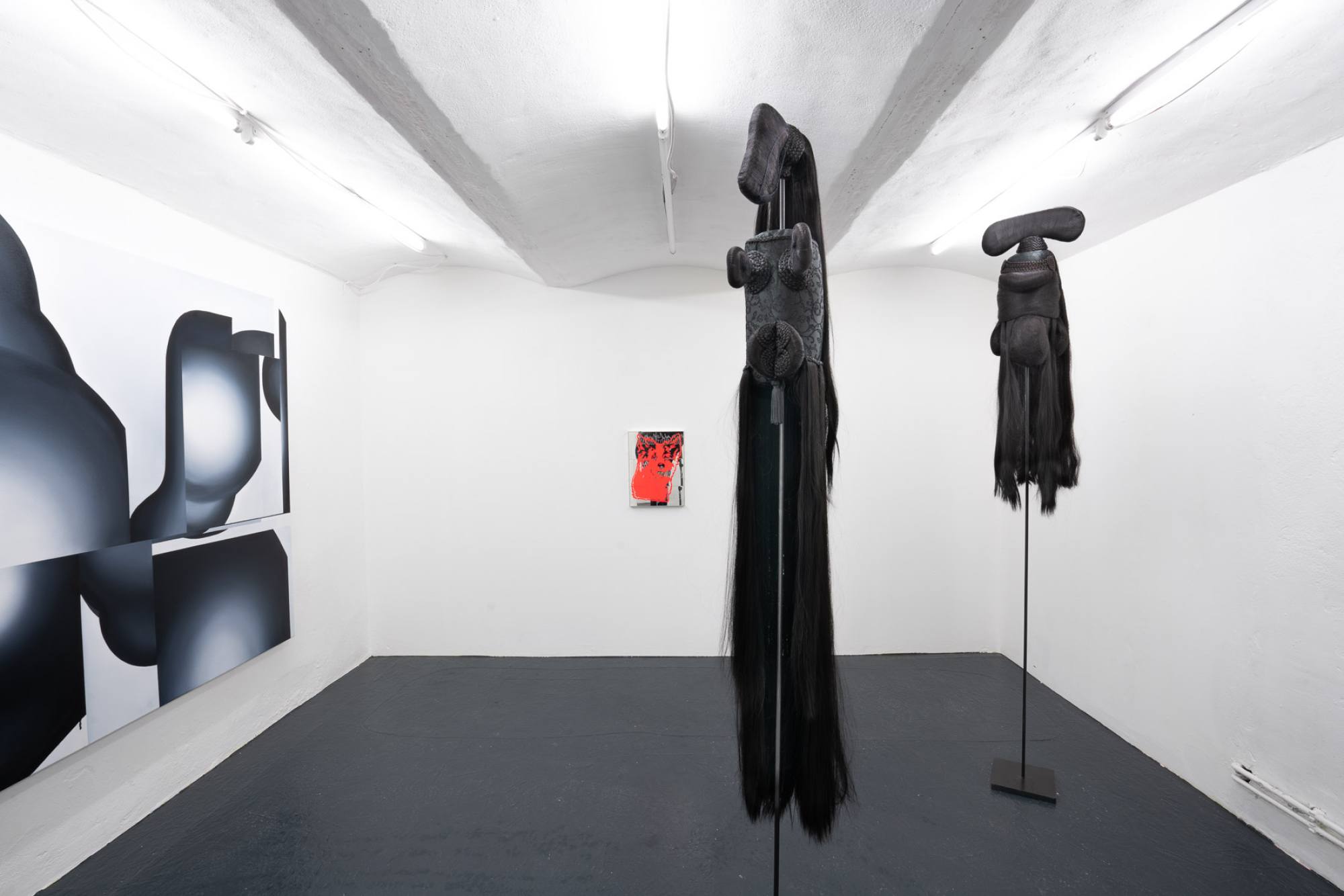

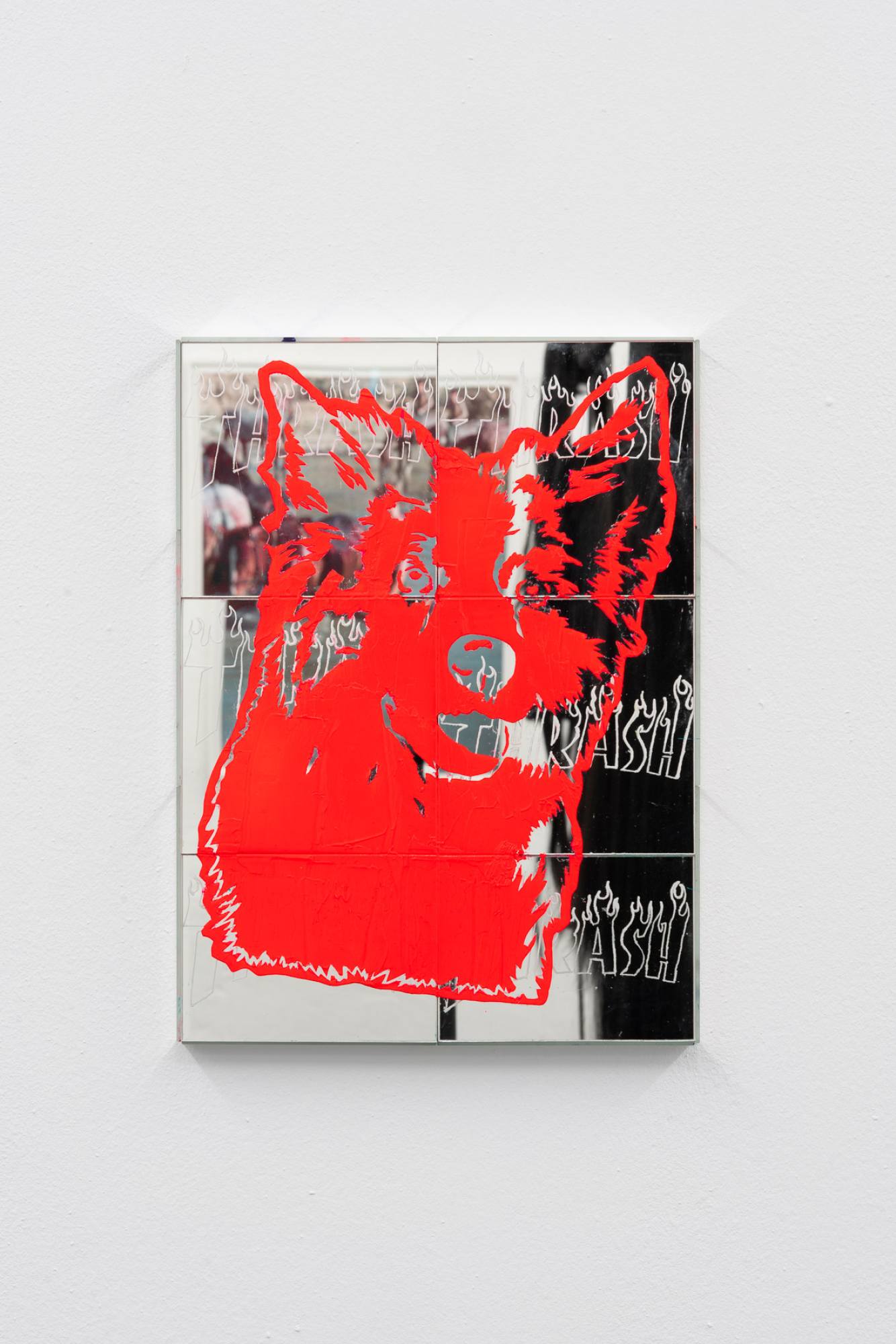
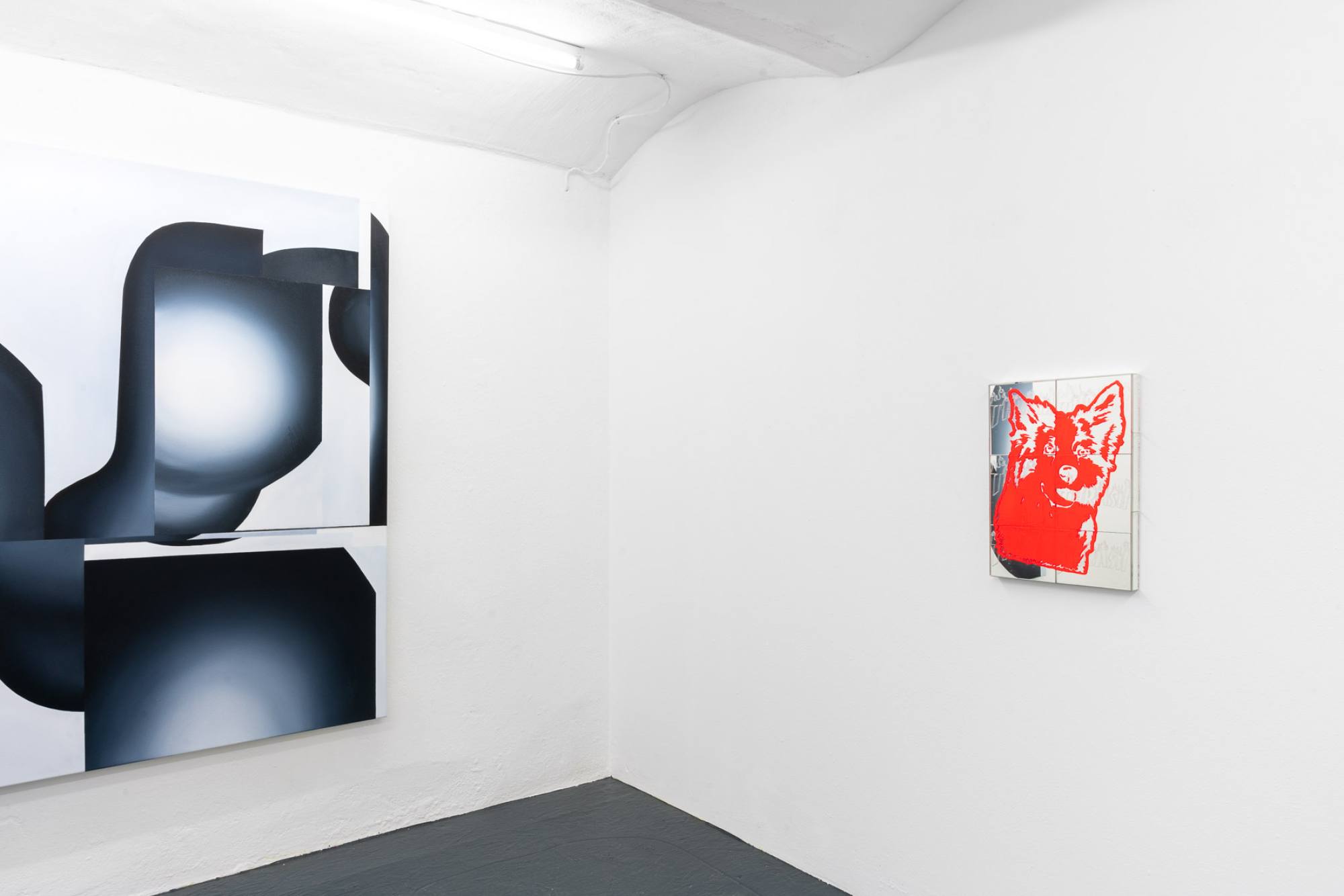
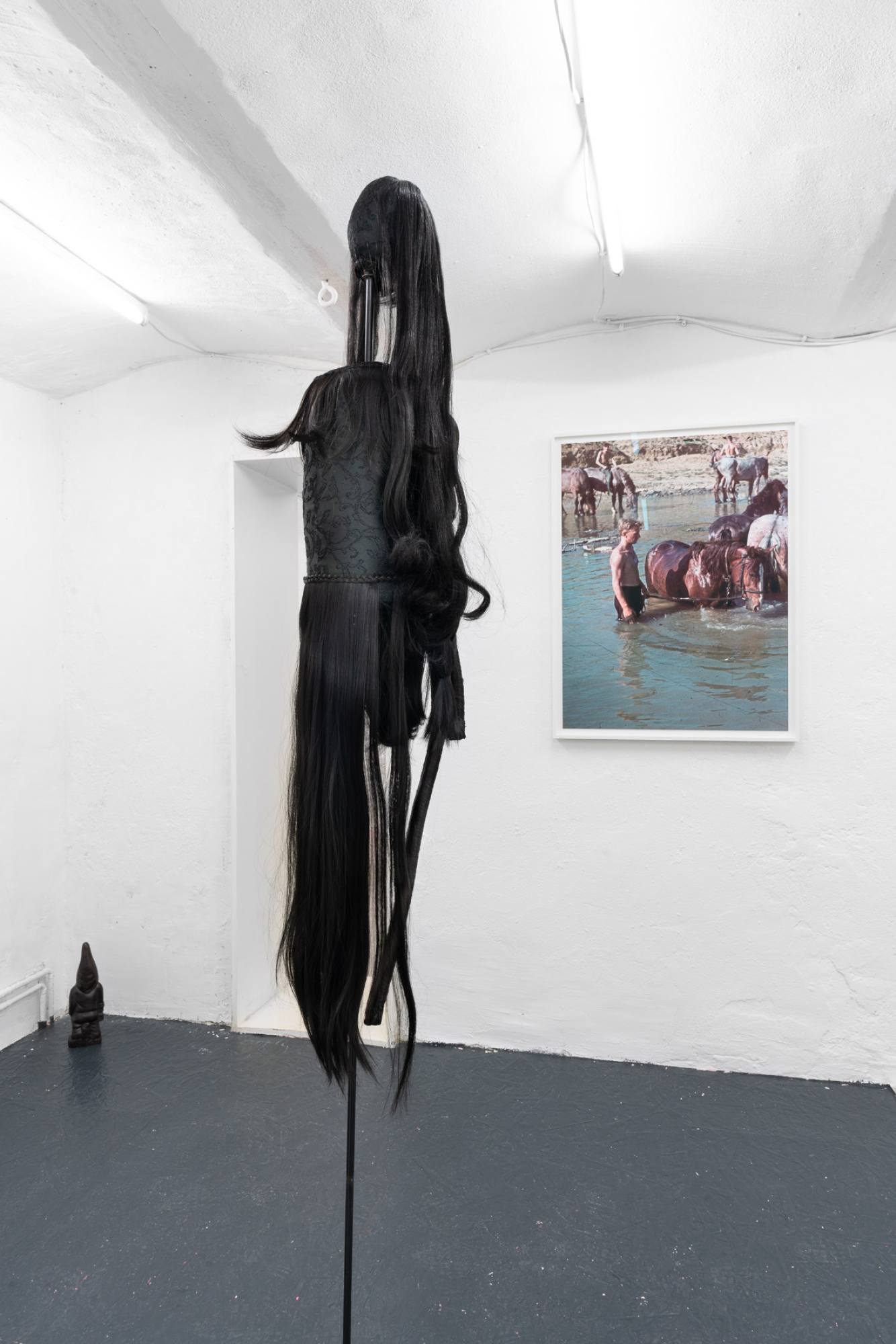

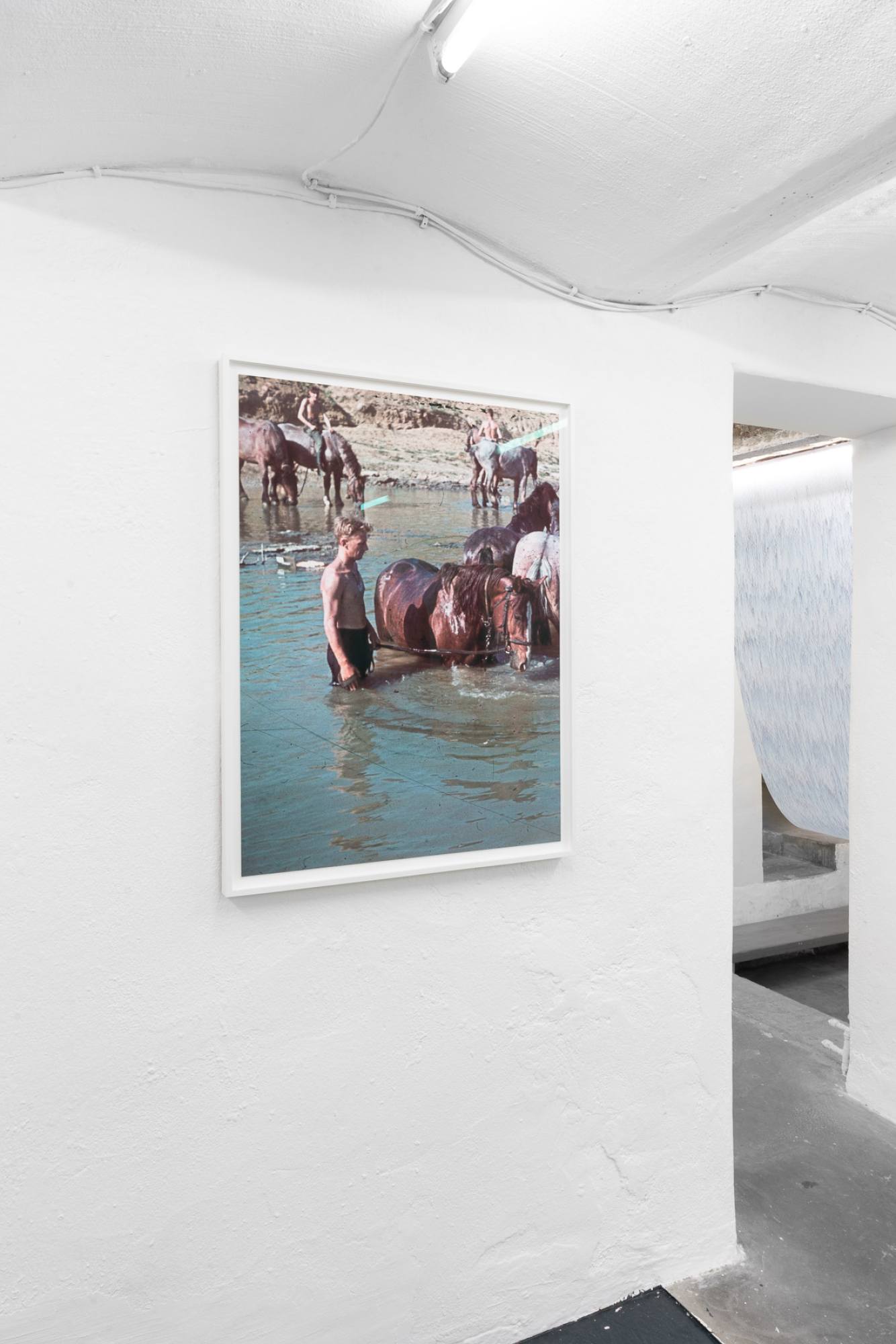
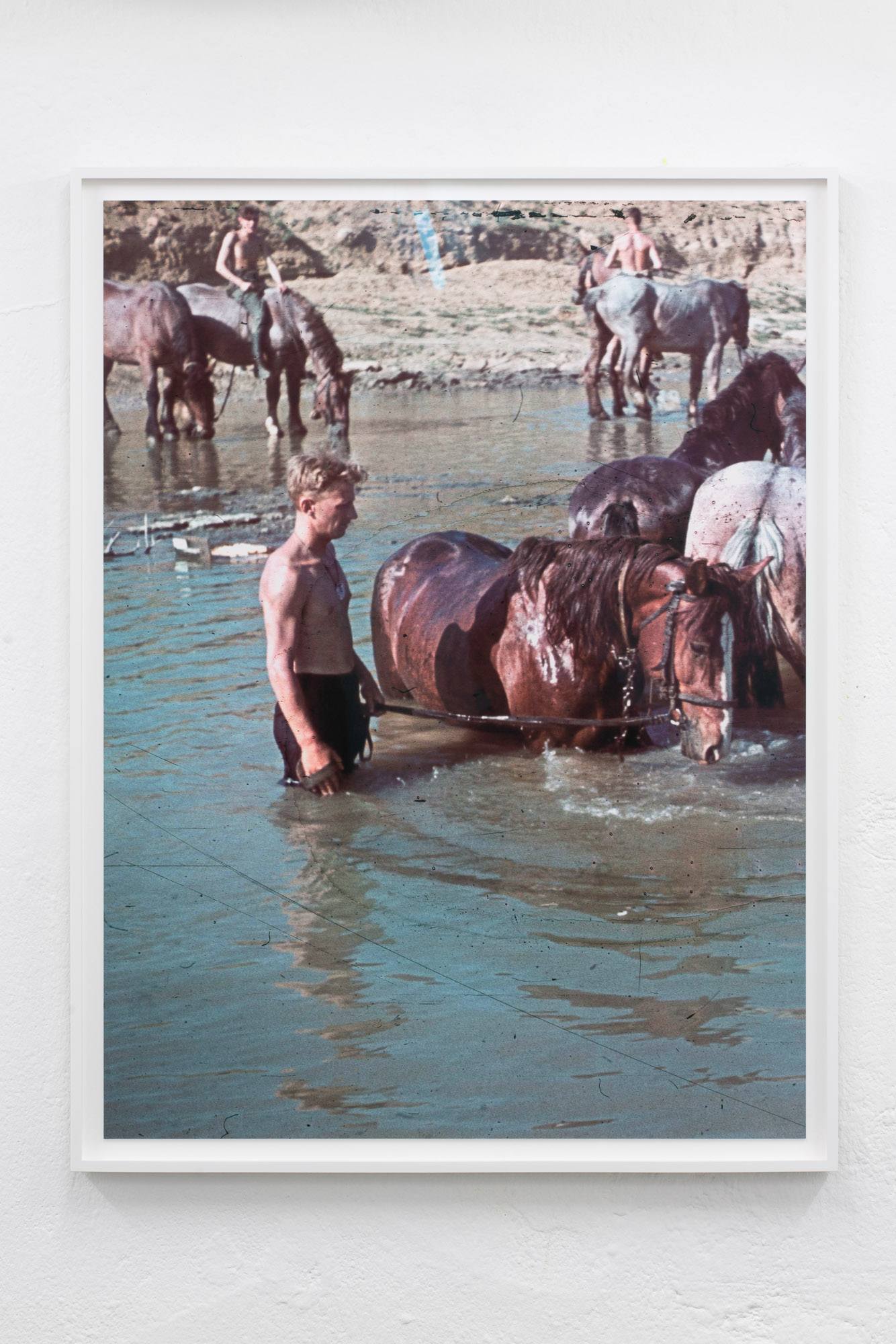
The first room in the foundation of an Berliner Altbau becomes a sparkling psychedelic radio jungle: a kitschy jaguar and a police dog guard a self-made treasure, the working pulse of a big-city cowboy pulsates, a waterfall gets rid of coded messages and a piece of black tiled wall makes urban disinfection possible, at least on one surface.
The second room then drifts more into darkness: the visitors encounter obscure mask heads made of brunette and synthetic hair plaits; German Landser groom the wet horse manes and amorphous volumes appear on light canvases, which change from a very deep anthracite to a brilliant white.
It is clear that rather sub-rational spaces are opened here. Once detached from logic and direct translatability, associations, memories and dream sequences come to the fore, which has always been the main field of art. The exhibition addresses inscriptions into the bodies and character of the people, which they may not be fully aware of. But with the right perceptive trigger, these inscriptions create sound inside the people. According to genealogy, for example, the experiences of our ancestors inscribe themselves into our stem cells over at least four generations.
Neuronal homeostasis- the balancing of tension in the individual body - the nerve cells send their electrical impulses through the neuronal network in a restricted voltage level. If the body falls below or exceeds this voltage level, the organism fails. Therefore, internal regulations exist in the cells to maintain this voltage level in the body. This inherent effort is called neuronal homeostasis.
Socio-cultural homeostasis- the collective tension discharges in society - the bodies are connected through exchange and build up collective tension surpluses through social conditioning. These surges are discharged into various actions - be it the manifold activities in the everyday life of the individual or the great social upheavals that affect almost everyone. For this flow of collective charges, the subjective "homeostasis experiences an expansion into the socio-cultural sphere. Examples of these new means of regulation are judicial systems, economic and political organizations, the arts, medicine, and technology" * . Paradoxically, social cultural homeostasis not only guarantees the stability of social systems, but also their constant transformation, which is why Niklas Luhmann, Francisco Varela and other sociologists have argued for the replacement of the term homeostasis by the term homeodynamics.
Especially in the basement of this city, people consciously or subconsciously search for a little balance, the constraints of the translucent upper world are derived with devotion in the underground clubs, hobby cellars, workshops, pumping stalls, devotional shrines, weapons camps, wellness catacombs and the studios for music, tattoo, massage and physical love. Thus, libertarian activities and obscure rituals have arisen through the excess of tension of our social constraints and under the sediments of the rationalized system execution dream walking landscapes have been able to thrive.
"Homeostasis" takes up pictorial works that take up these subterranean and partly subversive currents of our community and reflect them in content and aesthetics. The works form, as it were, the creative meta-level of the profound groundings of collective homeo-dynamics in the community of this city. From tingling exotic party excesses, by the cacophony of the big city, to the canon of forms of the fetish and the historical indentations that we still carry into our bodies; all this appears new here, sounds differently now.
But that's the way it is with these festivities of the discharge of tension: the dance floor sparkles in the front and the darkroom is draining in the back.
Related links: Heit / Carsten Becker / Ekaterina Burlyga / Lukas Glinkowski / Marianna Ignataki / Simon Mullan / Ena Oppenheimer / Marco Schmitt
